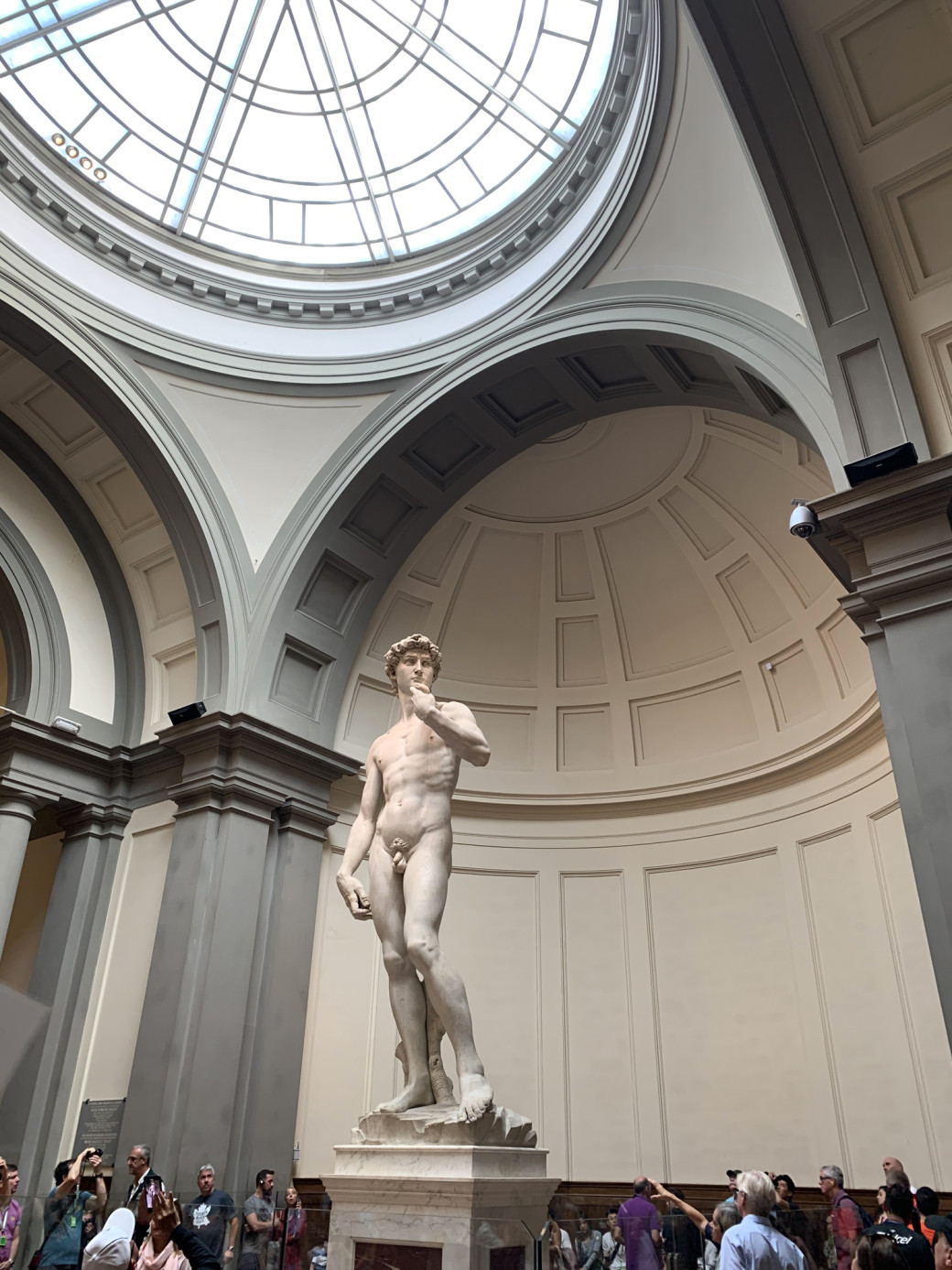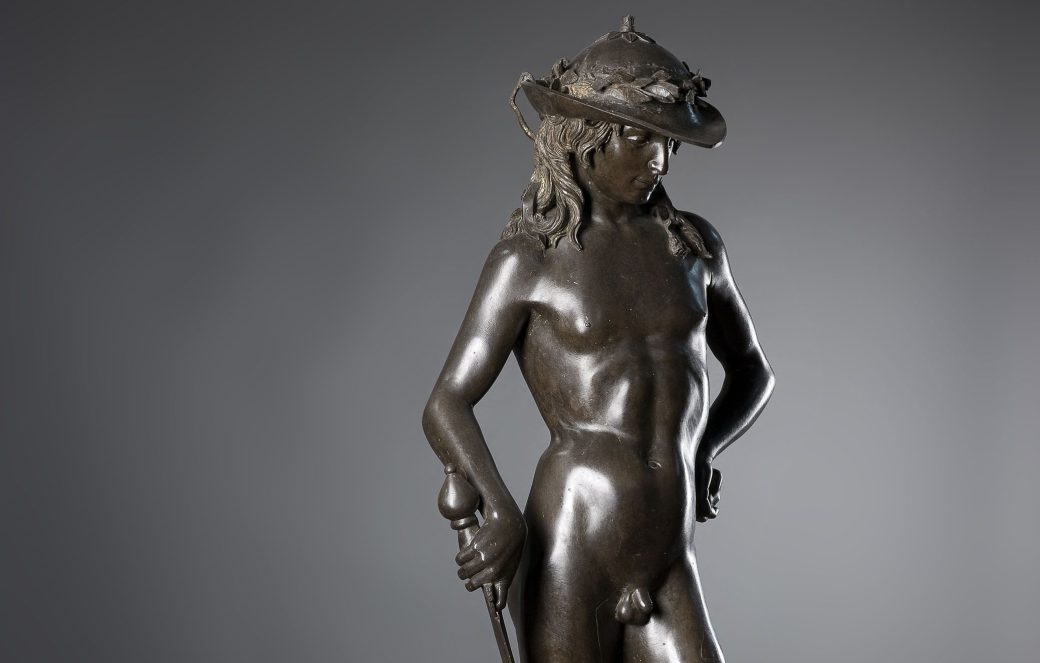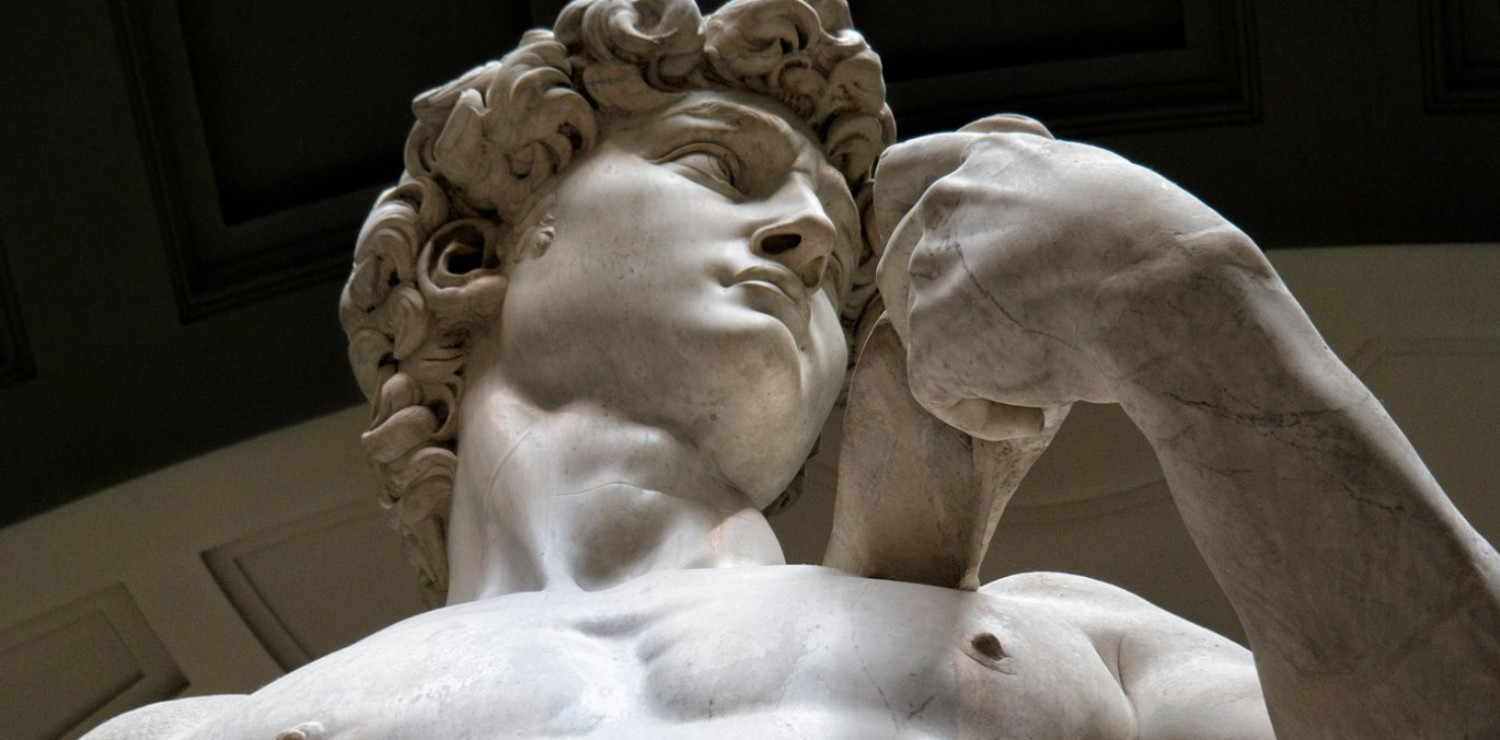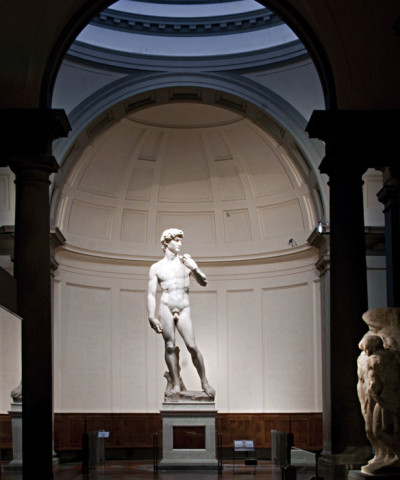The Five Davids of Florence
In addition to Michelangelo's most famous David, let us discover together the men carved in stone who have made Florence and its art illustrious
David and Golia. Artists of all time have been inspired by this story told in the Bible, the first book of Samuel, is an elegy of cunning that defeats brute force, selfishness and pride. Represents the good that overcomes evil. David was sculpted, painted, said. The most famous is that of Michelangelo, the Renaissance and the emblem of the city. Dated between 1501 and the beginning of 1504, now the original is the Accademia Gallery. Michelangelo's David is standing, naked, still in the process of fighting against Goliath. Michelangelo chose this moment of confrontation and not as Bernini, who paints a David who is' pulling a stone with a sling against Goliath, or as Verrocchio or Donatello carved a David after the victory, the Golia beheaded.
 Michelangelo's David at the Academy Museum
Michelangelo's David at the Academy Museum The elegance of position, proportions of the face and at the same time the strength of the body contract waiting for the fighting, make the statue a unique example of beauty and harmony. It was not easy on her conception before commission Michelangelo other two artists had to do with that piece of marble huge and fragile.
It seems that Michelangelo himself initially had the intention to portray David as a 'conquering hero with his head cut off Goliath at his feet, so' and as' depicted in the first sketches of the statue. But the block of marble (high nine arms) that Michelangelo received for his work, he was already 'been cut at the legs and there was not enough space to carve the severed head of Goliath at the foot of David. A dispute is then created around the location of the statue: the perfect masterpiece was protected or should stand in front of imposing Palazzo Vecchio. He won the second option and remained there until 1872, when for reasons of preservation, was moved to the Accademia Gallery. In Piazza della Signoria was placed a copy in 1910, and a second copy was placed at Piazzale Michelangelo or 25 June 1873, drawn by nine pairs of oxen.
 The copy of Michelangelo's David in Piazza della Signoria
The copy of Michelangelo's David in Piazza della SignoriaA long sword in one hand and in the other the stone at his feet shield and the head of Goliath, the David di Donatello, Donato di Niccolò di Betto Bardi (1386 ca.-1466 ca.), In bronze, is preserved National Museum of the Bargello. There was a scandal at the time but the figure, naked except for hat and boots, almost five feet high, of women's appearances, still has an innate emotional strength and sensuality. Dated 1444 - '46 approx., The David di Donatello attributes both of the biblical hero (Golia's head to toe, sword) symbol of civic virtue and the triumph of reason over brute force and irrationality, and the god Mercury (the winged sandals), god of commerce (the activity of the Medici family) who beheaded Argo Panoptes, the giant shepherd of a hundred occhi.L 'hero is depicted standing, with an unusual pointed hat decorated with a wreath of laurel The petasus shepherds classics.
 David di Donatello at the Bargello Museum
David di Donatello at the Bargello MuseumThe David of Verrocchio, Andrea di Francesco di Cione (1435 c. 1488), preserved in the Bargello, is made of bronze. Dated 1468-1469 is a sculpture of nice composition and balance with the distinction of having the big bearded head of Golia at his feet, a clear sign of victory.
 Verrocchio's David at the Bargello Museum
Verrocchio's David at the Bargello MuseumIt is not located in Florence, is preserved in Rome at the Galleria Borghese, and not other contemporary masterpieces treated. But Bernini's David, the greatest exponent of the Italian Baroque (1598-1680), competes with the figure of Michelangelo charm and notoriety. Bernini depicts David at maximum physical tension, high drama, while the loaded slingshot, is set to launch. It 'a sculpture plastic, which transmits the power to be in action.
 The Bernini's David at the Galleria Borghese in Rome
The Bernini's David at the Galleria Borghese in RomeWhat stands out is the fineness of movement, strong, quiet, and beauty of the body. The face, not at a young age, shows concentration and focus in what is happening










